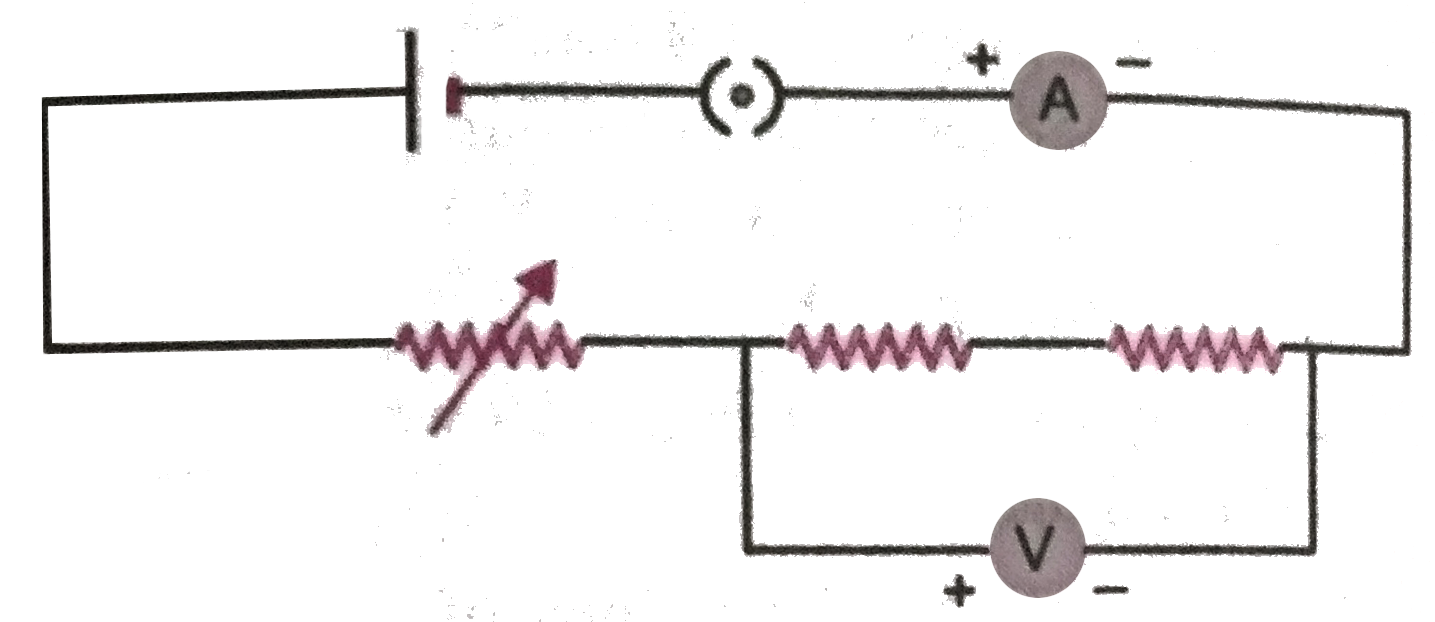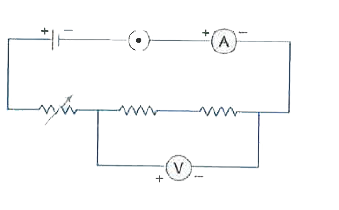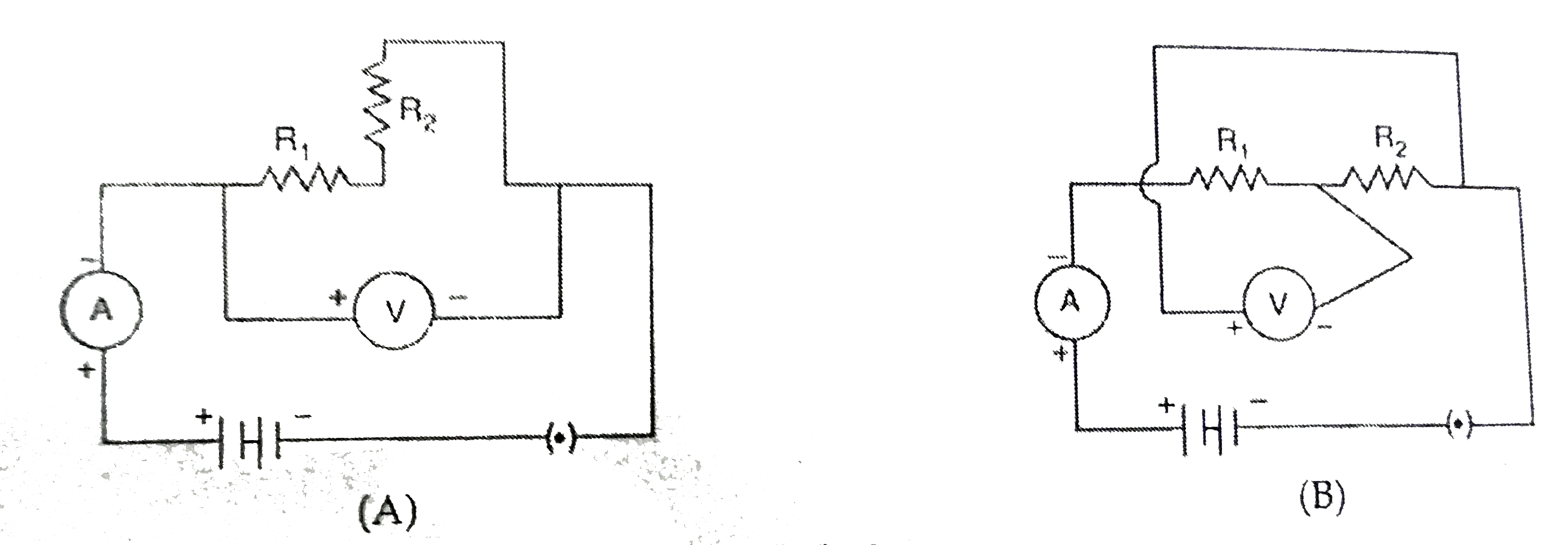To determine the equivalent resistance of two resistors when connected in series, a student arrnaged the circuit components as shown in (Fig. 3.63) But he did not succeed to achieve the objective. Which mistake has been committed by him in setting up the circuit ?
 .
.
The ammeter has not been connected properly as its positive terminal has been joined to the negative of the battery and negative terminal to the positive of the battery.
Topper's Solved these Questions
Similar Questions
To determine the equivalent resistance of two resistors when connected in series, a student arranged the circuit components as shown in the diagram. But he did not succeed to achieve the objective.

Which mistake has been committed by him in setting up the circuit?View SolutionA student did the experiment to find the equivalent resistance of two given resistors, R1 and R2 first when they are connected in series and next when they are connected in parallel. The two values of the equivalent resistance obtained by him were Rs and Rp respectively. Compare Rs and Rp.
View Solution
Knowledge Check
- Question 1 - Select One
In an experiment to find the equivalent resistance of two resistors connected in series, a student uses the circuit shown :
This circuit will give :
 Acorrect reading for voltage V but incorrect reading for current IBcorrect reading for current I but incorrect reading for voltage (V)Ccorrect readings for both voltage V and current IDIncorrect readings for both current I and voltage V
Acorrect reading for voltage V but incorrect reading for current IBcorrect reading for current I but incorrect reading for voltage (V)Ccorrect readings for both voltage V and current IDIncorrect readings for both current I and voltage V - Question 2 - Select One
To find the resultant resistance of two resistors when connected in series, a student arranged the various components according to the circuit shown alongside :
The student, however, did not succeed in his objective. Which of the following mistake has been made by the student in setting up the circuit ?
 Aposition of voltmeter is wrongBposition of ammeter is wrongCterminals of voltmeter are wrongly connectedDterminals of ammeter are wrongly connected
Aposition of voltmeter is wrongBposition of ammeter is wrongCterminals of voltmeter are wrongly connectedDterminals of ammeter are wrongly connected - Question 3 - Select One
In order to determine the equivalent resistance of two resistors R1 and R2 connected in series, a student made this circuit for his experiment.
The only statement which is true for this circuit is that it gives :
 Aincorrect readings for current I as well as for potential difference VBcorrect reading for current I but incorrect reading for potential difference VCincorrect reading for current I but correct reading for potential difference VDcorrect readings for both current I and potential difference V.
Aincorrect readings for current I as well as for potential difference VBcorrect reading for current I but incorrect reading for potential difference VCincorrect reading for current I but correct reading for potential difference VDcorrect readings for both current I and potential difference V.
In the experiment on finding the equivalent resistance of two resistors connected in series, three students connected the ammeter in their circuits in the three ways X, Y and Z shown here.

Assuming their ammeters to be ideal, the ammeters have been correctly connected inView SolutionA student stes up an electric circuit shown here for finding the equivalent resistance of two resistors in series :

In this circuit, the :View SolutionIn the experiment on finding the equivalent resistance of two resistors, connected in parallel, three students connected the voltmeter in their circuits, in the three ways X, Y and Z shown here.

The voltmeter has been correctly connected inView SolutionFour student have made the following circuit diagrams for determining the equivalent resistance of two resistors connected in series :

The correct circuit diagram is :View SolutionTwo students made two circuits A and B to determine the resultant resistance of two resistors R1 and R2 connected in series :

All the components have been connected correctly in :View Solution

